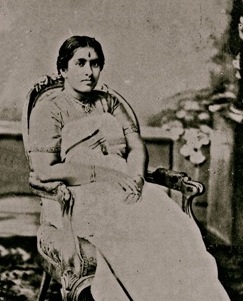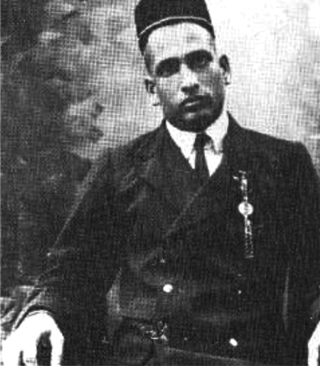
The Kingdom of Travancore, also known as the Kingdom of Thiruvithamkoor, was an Indian kingdom from c. 1729 until 1949. It was ruled by the Travancore Royal Family from Padmanabhapuram, and later Thiruvananthapuram. At its zenith, the kingdom covered most of the south of modern-day Kerala and the southernmost part of modern-day Tamil Nadu with the Thachudaya Kaimal's enclave of Irinjalakuda Koodalmanikyam temple in the neighbouring Kingdom of Cochin. However Tangasseri area of Kollam city and Anchuthengu near Attingal in Thiruvananthapuram were parts of British India.

Anizham Thirunal Marthanda Varma was the founding monarch of the southern Indian Kingdom of Travancore from 1729 until his death in 1758. He was succeeded by Rama Varma (1758–98). While he was the heir to the throne, he suggested to his uncle the idea of forming an alliance with the Mughal Nawab of Carnatic. Rama Varma pledged allegiance to the Mughal empire and embraced the title of "Zamindar of Malabar". The feudatory status of Travancore persisted even during the era of Hyder Ali.
Venad was a medieval Hindu kingdom lying between the Western Ghat mountains and the Arabian Sea on the south-western tip of India with its headquarters at the port city of Kollam/Quilon. It was one of the major principalities of Kerala, along with kingdoms of Kannur (Kolathunadu), Kozhikode (Nediyiruppu), and Kochi (Perumpadappu) in medieval and early modern period.

Thiruvananthapuram District is the southernmost district in the Indian state of Kerala. The district was created in 1949, with its headquarters in the city of Thiruvananthapuram, which is also Kerala's administrative centre. The present district was created in 1956 by separating the four southernmost Taluks of the erstwhile district to form Kanyakumari district. The city of Thiruvananthapuram is also known as the Information technology capital of the State, since it is home to the first and largest IT park in India, Technopark, established in 1990. The district is home to more than 9% of total population of the state.

Kanyakumari district is one of the 38 districts of Tamil Nadu state and the southernmost district in mainland India. It stands second in terms of population density among the districts of Tamil Nadu. It is also the richest district in Tamil Nadu in terms of per capita income, and also tops the state in Human Development Index (HDI), literacy, and education. The district's headquarters is Nagercoil.

The Ettuveetil Pillamar were Nair nobles from eight ruling Houses in erstwhile Travancore in present-day Kerala state, South India. They were associated with the Padmanabhaswamy temple in Thiruvananthapuram and the Ettara Yogam. Their power and wealth grew until Marthanda Varma (1706–1758), the last king of Venad and the first king of Travancore, defeated them in the 1730s.
Iraivikutty Pillai was the commander-in-chief of Venad Kingdom in the present Kerala, India
Thiruvithamcode, is a small panchayat town located in the Kanyakumari district of the Indian state of Tamil Nadu. Thiruvithamcode is about 20 km from Nagercoil and 2 km from Thuckalay.

Kilimanoor is a panchayat and a town in the Chirayinkeezhu taluk of Thiruvananthapuram district in Kerala, India. It is located on MC/SH 1 Road, 33 kilometres (21 mi) North-west of the city of Thiruvananthapuram (Trivandrum), 14 km (8.7 mi) east of Attingal and 20 km (12 mi) east of Varkala.
The history of Thiruvananthapuram dates back to the 18th century AD. In 1795, the city became the capital of the princely state of Travancore. Several historic landmarks of the city, including the Kowdiar Palace, University of Kerala, and Napier Museum were built during that period. After independence, Thiruvananthapuram was made the capital of the state of Kerala.

Pooradam Thirunal Sethu Lakshmi Bayi CI was the monarch, though designated as the Regent due to British policy, of the Kingdom of Travancore in southern India between 1924 and 1931. She, along with her younger cousin, Moolam Thirunal Sethu Parvathi Bayi, were adopted into the Travancore royal family and were the granddaughters of the celebrated painter, Raja Ravi Varma.

Sarkaradevi Temple is one of the most important temples in South India. It is situated Chirayinkeezhu town in Thiruvananthapuram district. Tradition accords a remote antiquity to this temple. Its main deity is Bhadrakali. The Sarkaradevi Temple assumed a significant status for many reasons and rose to historical importance mainly with the introduction of the famous Kaliyoot festival by Anizham Thirunal Marthanda Varma, the Travancore sovereign, in 1748. The Sarkaradevi Temple have some basic attachment with Nakramcode Devi Temple which located in Avanavanchery, Attingal.
Rajah Rama Varma was the ruler of the Indian kingdom of Venad, later known as Travancore, in the modern day state of Kerala, India between 1724 and 1729, having succeeded his brother Unni Kerala Varma. He is better known as the uncle of Maharajah Padmanabha Dasa Vanchi Pala Marthanda Varma Kulasekhara Perumal, the "maker of modern Travancore". He was born into the Royal Family of Kolathunadu, as the second son of Rajah Ittamar of Thattari Kovilakam. It was princes from the Parappanadu family who customarily married Kolathunadu princesses. Rama Varma's entire family, including himself, two sisters and his elder brother Unni Kerala Varma, were adopted into the Venad house as members of the Travancore Royal Family by Rajah Ravi Varma, nephew of Umayamma Rani due to the failure of heirs there. Ittammar Raja's sister and her sons, Rama Varma and Raghava Varma, settled in Kilimanoor and married the now adopted sisters. Of the adopted sisters, one died soon after her adoption while the other was the mother of the Maharajah Marthanda Varma.

"Aswathi Thirunal" Umayamma, known as Queen Umayamma or Queen Ashure (Aswathi), (died 1698), was the regent queen of Venad (Venatu) in southern India from 1677 to 1684 on behalf of her young nephew (son of her older sister Senior Queen Makayiram Thirunal) Ravi Varma. She also served as the Junior Queen of Attingal under Senior Queen Makayiram Thirunal and subsequently as the Senior Queen of Attingal.

The Travancore royal family was the ruling house of the Kingdom of Travancore.The Travancore royal family signed a treaty with the British in 1788, thereby adopting British dominance. Later, in 1805, they revised the treaty, leading to a diminution of royal authority and the loss of political independence for Travancore. They had to give up their ruling rights over the common people in 1949 when Travancore were forced to merge with Independent India and their political pension privileges were abolished in 1971.
Chirayinkeezhu Taluk is a Taluk (tehsil) in Thiruvananthapuram district in the Indian state of Kerala. It is shares border with Varkala Taluk in North and with Thiruvananthapuram Taluk in South. It comprises 12 panchayats and Attingal Municipality. Chirayinkeezhu taluk is the birthplace of a host of illustrious personalities like the painter Raja Ravi Varma, the great poet and social reformer Kumaran Asan and Prem Nazir etc.

Koyi Thampuran was the title of the Prince Consorts of the Queens and Princesses of Travancore. The Koyi Thampurans' gained prominence and prestige in Kingdom of Travancore as they were the fathers of the then reigning Kings. In Travancore, there were ten clans of Koyi Thampurans. The most ancient were the ones settled at Kilimanoor ; others were Kirthipuram, Pallam, Paliyakkara and Nirazhi, Ananthapuram, Chemprol, Cherukol, Karazhma and Vatakkemadham.
Keezhperoor or Kupaka is a village located 6 kilometers from Kilimanoor in Thiruvananthapuram district of Kerala. It houses Thirupalkadal Sreekrishnaswamy Temple, family temple of Venad, Kizhakkumkara Devi Temple, and Thekkumkara Mahadeva Temple.
Munnu was a Mughal commander who attacked Venad during the reign of Lakshita Rani. He may have attacked the kingdom during Malayalam Era 855











